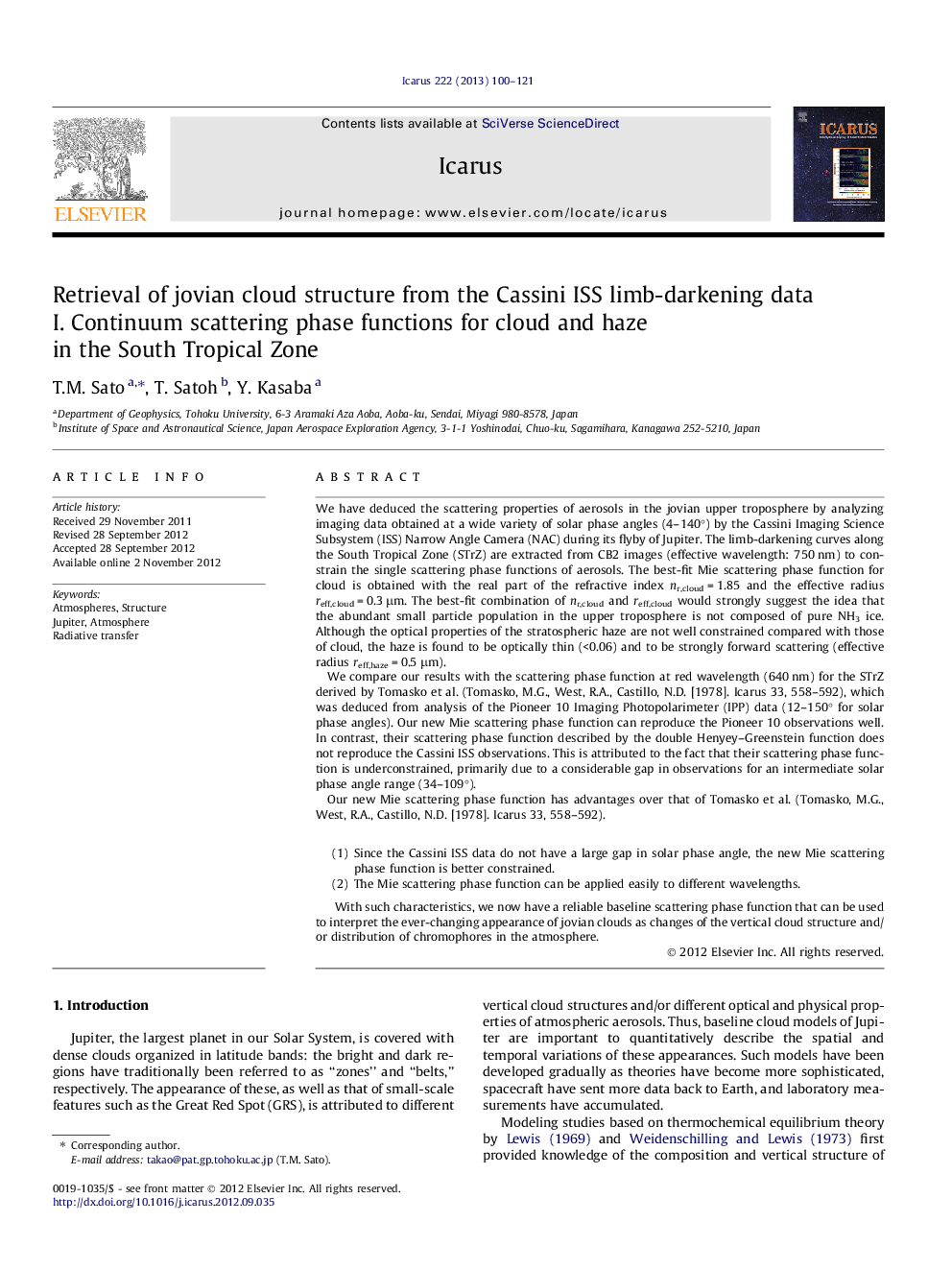| کد مقاله | کد نشریه | سال انتشار | مقاله انگلیسی | نسخه تمام متن |
|---|---|---|---|---|
| 1773722 | 1021144 | 2013 | 22 صفحه PDF | دانلود رایگان |

We have deduced the scattering properties of aerosols in the jovian upper troposphere by analyzing imaging data obtained at a wide variety of solar phase angles (4–140°) by the Cassini Imaging Science Subsystem (ISS) Narrow Angle Camera (NAC) during its flyby of Jupiter. The limb-darkening curves along the South Tropical Zone (STrZ) are extracted from CB2 images (effective wavelength: 750 nm) to constrain the single scattering phase functions of aerosols. The best-fit Mie scattering phase function for cloud is obtained with the real part of the refractive index nr,cloud = 1.85 and the effective radius reff,cloud = 0.3 μm. The best-fit combination of nr,cloud and reff,cloud would strongly suggest the idea that the abundant small particle population in the upper troposphere is not composed of pure NH3 ice. Although the optical properties of the stratospheric haze are not well constrained compared with those of cloud, the haze is found to be optically thin (<0.06) and to be strongly forward scattering (effective radius reff,haze = 0.5 μm).We compare our results with the scattering phase function at red wavelength (640 nm) for the STrZ derived by Tomasko et al. (Tomasko, M.G., West, R.A., Castillo, N.D. [1978]. Icarus 33, 558–592), which was deduced from analysis of the Pioneer 10 Imaging Photopolarimeter (IPP) data (12–150° for solar phase angles). Our new Mie scattering phase function can reproduce the Pioneer 10 observations well. In contrast, their scattering phase function described by the double Henyey–Greenstein function does not reproduce the Cassini ISS observations. This is attributed to the fact that their scattering phase function is underconstrained, primarily due to a considerable gap in observations for an intermediate solar phase angle range (34–109°).Our new Mie scattering phase function has advantages over that of Tomasko et al. (Tomasko, M.G., West, R.A., Castillo, N.D. [1978]. Icarus 33, 558–592).(1)Since the Cassini ISS data do not have a large gap in solar phase angle, the new Mie scattering phase function is better constrained.(2)The Mie scattering phase function can be applied easily to different wavelengths.With such characteristics, we now have a reliable baseline scattering phase function that can be used to interpret the ever-changing appearance of jovian clouds as changes of the vertical cloud structure and/or distribution of chromophores in the atmosphere.
► Scattering properties of aerosols in Jupiter are retrieved from Cassini ISS data.
► The real refractive index of cloud (=1.85) is much higher than that for NH3 ice.
► Jovian upper troposphere is covered with a layer of small cloud particles (0.3 μm).
► Stratospheric haze is optically thin and strongly forward scattering.
► Our Mie scattering phase function can reproduce the Pioneer 10 IPP observations.
Journal: Icarus - Volume 222, Issue 1, January 2013, Pages 100–121